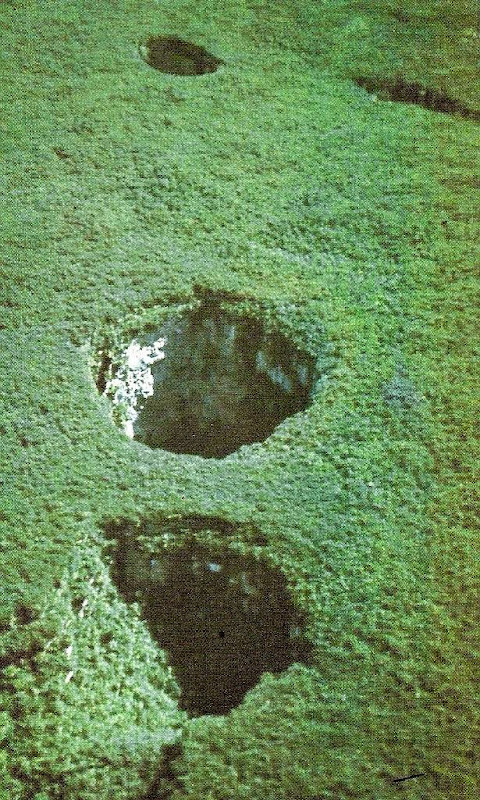Cerro Sarisarinama is a table-topped mountain called a tepui, in Jaua-Sarisariñama National Park at the far south-west of Bolívar State, in Venezuela, near the border with Brazil. The name of the mountain originates from a legend of the indigenous Ye'kuana Indians that speaks of an evil spirit living in caves up in the mountain. Sometimes the evil spirit is heard devouring human flesh and then a terrible sound "Sari... sari..." is heard.
The tepui is located in one of the most remote areas in the country, with the closest road being hundreds of miles away. Unlike other tepuis, Cerro Sarisariñama is heavily wooded with 15–25 metre-high forest fully covering the top of it. This isolated ecosystem is home to numerous endemic species of plants and animals.
Photo credit: unknown
The most distinctive features of Cerro Sarisariñama are its gigantic sinkholes – four in total, with the largest one, called Sima Humboldt, is up to 352 metres wide and 314 metres deep. Down below Sima Humboldt expands to 502 meters wide. The other well known sinkhole Sima Martel is equally impressive at 248 meters deep. Both sinkholes are roughly circular and are located just 700 meters away from each other. The view of these gigantic holes from up the air is quite stunning.
The sinkholes were first discovered in 1961 by pilot Harry Gibson, but the first expedition could only be organized in 1974. The team, consisting of numerous explorers and specialists, descended into the sinkhole with ropes only to realize that getting out was not easy. The sinkhole widens as it goes down making the ropes hang freely. After several days the men made a desperate attempt to cut giant trees to make an open space for the helicopter to land. Eventually they used cable ladders to get out, but who knows how many rare species of plants were unnecessarily destroyed.
The second expedition team arrived two years later and they came more prepared than the first. This team discovered the third sinkhole - Sima de la Lluvia, which was a quartzite cave. For some two decades Sima de la Lluvia remained the longest known quartzite cave (1.35 km) in the world.
Photo credit: Caters News

Sources: Wondermodo / Wikipedia















"Sometimes the evil spirit is heard devouring human flesh and then a terrible sound "Sari... sari..." is heard"
ReplyDelete...In my native language "Sari... sari." means : "Jump...jump!"...